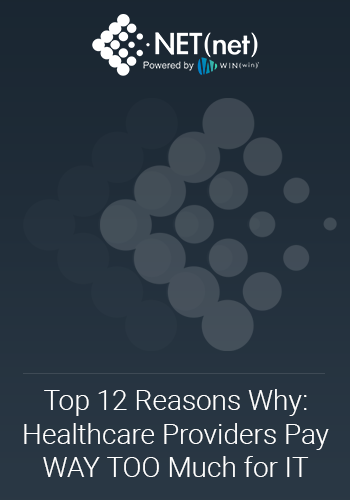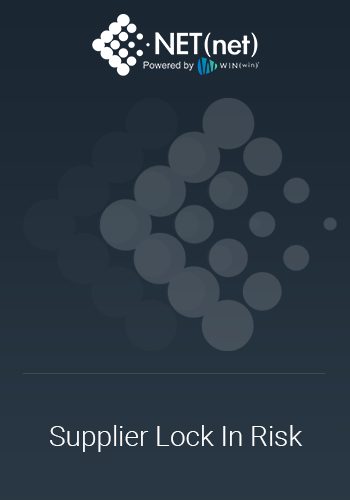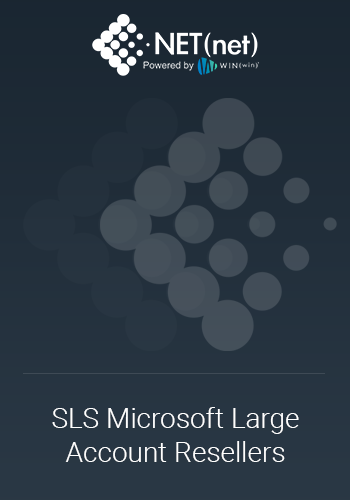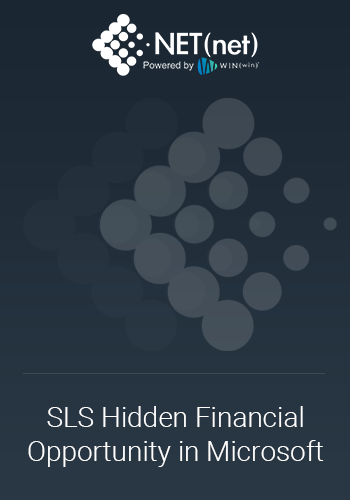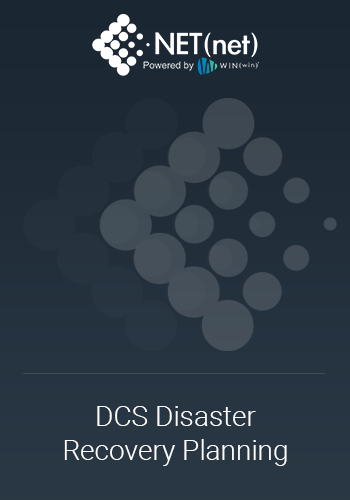Preface:
Thank you for joining us for this 10-part series to discuss the
- Nearly all Clients are Clamoring for Savings in 2023. This is largely due to (a) rising input costs, (b) softening business forecasts, and (c) continued economic uncertainty and headwinds. This has caused many clients to re-evaluate spending plans and implement new cost-cutting targets.
- IT is the Number One Cost Savings Category of the Modern Enterprise. IT is typically the highest indirect spend area for modern enterprises and is also the cost category with the highest potential savings yield (we average about 33% savings on addressable IT spend). In addition, since 2020, clients have largely exhausted conventional cost savings countermeasures such as canceled projects, delayed spending plans, and cuts in discretionary spending, and many have even gone through Reductions In Forces (RIFs), and/or even facility closures. As a result, clients are at risk of cutting muscle and bone this year as cost reduction demands persist, but desperate measures are not necessary when we can help you harvest considerable value from your mainframe supply chain, do so with minimal risk, and perhaps even get additional value including modernization and digital transformation among other benefits.
- NET(net) is the Number One IT Cost and Value Optimization Provider. In the last 20 years, we have shaped over $2 Trillion of technology investment, captured well over $400 Billion of incremental value for our clients and partners, and have an 85% probability of achieving savings ranging between 13-53%.
Introduction:
When it comes to Mainframes, NET(net) sees incredible savings opportunities in 2023. Not since 2008 has there been as much downward pricing pressure on technology incumbents, and we believe meaningful savings targets can be achieved, but due to the market conditions, technology incumbent suppliers are seeking to increase prices and will be highly disruptive to any cost savings agenda, so it will require a commitment to do the hard work to realize meaningful reductions.
With that as a backdrop, we give you our
In case you missed our previous installments, take a look back at our previous posts:
- Part 0 (Feb 1): Price Benchmark Your Mainframe Costs
- Part 1 (Mar 1): Optimize Mainframe Licensing
- Part 2 (Apr 1): Minimizing MIPS (Millions of Instructions Per Second)
- Part 3 (May 1): Optimizing MLCs (Monthly License Charges)
- Part 4 (Jun 1): Upgrading Your Operating Environment
Way #5 of 10: Optimizing Mainframe Maintenance & Support Services
It is often said that it is easier to catch flies with honey than it is with vinegar, and this is often the frame of mind for most clients when they consider embarking on an initiative to reduce costs, and while the old saying certainly has merit from a colloquial perspective, it is often the wrong approach when considering how best to minimize cost and risk and maximize the realization of value and benefit of enterprise technology investments, and most notably so when dealing with monopolistic suppliers like IBM in the mainframe space. As a vested, highly interested, and self-motivated party in your decision-making processes, suppliers like IBM have strong incentives to want to influence you in ways that best serve them. That is why we strongly recommend closely examining your unilateral options to get a good understanding of your BATNA (Best Alternative To a Negotiated Agreement) before you discuss the possibility of a cooperative approach that may increase the scope of your ZOPA (Zone Of Possible Agreement).
As a result of this thinking, we will focus on unilateral strategies first, before discussing cooperative strategies:
Unilateral Strategies
- Hardware Consolidation: Review your mainframe infrastructure and identify opportunities for hardware consolidation. Assess the workload distribution and consider consolidating workloads onto fewer physical machines. By reducing the number of physical machines, you can potentially lower power consumption, maintenance costs, and associated support expenses.
- Rationalize Software Licensing: Evaluate your software licensing agreements and optimize them to align with your actual usage. Identify any unused, redundant, and underutilized software components and reduce, reallocate, or eliminate them. Consider negotiating new licensing agreements based on your current requirements, potentially reducing the overall licensing costs.
- Optimize System Configuration: Analyze your system configuration and fine-tune it for optimal performance and resource utilization. Ensure that your mainframe is configured efficiently, taking advantage of the available capacity and features. This may involve optimizing memory allocation, adjusting processor utilization, or implementing workload balancing techniques.
- Implement Automation: Once your operating environment is consolidated, rationalized, and configured appropriately, now you can automate routine tasks and processes to help reduce manual effort and associated costs. Automating sub-optimized operating environments has the illusion of progress, but it is the opposite.
- Rationalize Your Maintenance Service & Support Contracts:
- Drop Support: Don’t pay maintenance for software you no longer use. Evaluate software titles to make sure there is a valid business need for its continued use and if not, drop it.
- Reduce Support: Seek to only pay support on quantities in use, rather than quantities owned or quantities deployed. Depending on your contract, there may or may not be provisions which allow you to monetize these opportunities, but if not, negotiate new provisions that enable this right. This may involve agreeing to punitive future provisions to restore these rights if you so choose, so be sure you understand all the fine print before agreeing to do something that might cost you more later.
- Standardize: Don’t pay for support on multiple products that do the same thing. If you have two products performing similar functions, determine if you might be able to consolidate to one and get rid of the other one, or use one in a different environment with a lower support standard.
- Terminate Support on Unsupported Products: Don’t pay maintenance on products that are no longer supported. Look carefully at your maintenance bill and be sure you’re only paying maintenance on products that are still supported.
- Pro Tip: IBM and ISVs are notorious for continuing to charge maintenance on products that are no longer even supported by the supplier, and it’s up to the client organization to spot this and stop it.
- Tailor Support Levels: Assess your specific support needs, evaluate the supplier’s support options, and adjust the service levels accordingly. Review the requirements of your workloads, applications, and business operations to determine if you can optimize the support levels without compromising critical functions. This may involve reducing the scope of support, adjusting response times, or eliminating unnecessary services. There are often at least 3 levels of support to consider (i) self-support, (ii) 8-5 M-F Support, (iii) or 24x7x365 Support. Various applications might have varying levels of needs, and you can often save considerably on realigning support to business needs.
Pro Tip: Review the support logs carefully. We often see that there are very few (if any) Sev1 production problems, and even when there are, the client organization is almost always able to resolve the support incident before the supplier support organization even responds. It is not uncommon for us to see single digit numbers of support instances, and zero times where the supplier support services were able to solve the problem before the client organization’s employees did for a given year.
- Negotiate:
It's crucial to note that unilaterally reducing IBM Mainframe hardware and software support costs may have implications and should be carefully assessed based on your organization's specific needs, risk tolerance, and contractual obligations, among other factors. Conduct a thorough analysis of potential cost savings, risks, and operational impacts before implementing any changes. Engaging with IBM or experienced mainframe cost optimization consultants like NET(net) can provide valuable insights and assistance in navigating these cost reduction efforts.
The #1 Unilateral Option: Third Party Support
One powerful unilateral option to consider is that of third-party support: Third-party support providers generally offer cost-effective alternatives to IBM maintenance and support services for IBM Mainframes. By switching to a reputable third-party support provider, you can generally achieve significant cost savings while still receiving reliable maintenance and support services. Here are some ways in which client organizations can save money by opting for third-party support:
- Cost Reduction: Third-party support providers typically offer their services at a lower cost compared to IBM support contracts. By switching to a third-party support model, client organizations can achieve significant cost savings on their annual maintenance expenses. These cost savings can be especially beneficial for client organizations looking to optimize their IT budgets.
- Tailored Support Options: Third-party support providers often offer flexible support options that can be customized to fit a client organization's specific needs. This means client organizations can choose the level of support required, including no support, limited support, M-F 8-5 support, 24x7x365 support, on-site assistance, or remote troubleshooting, etc. By tailoring the support options, client organizations can avoid paying for unnecessary services and focus their budget on critical support needs.
- Extended Hardware Lifespan: Mainframe hardware can have a long lifespan, often exceeding the supplier's end-of-service life dates. Third-party support providers specialize in supporting legacy systems and can offer maintenance services beyond IBM's official support period. By extending the lifespan of the mainframe hardware, client organizations can delay or avoid costly hardware upgrades.
- Higher Quality of Service. Generally, third-party support providers will not only give you a named technical support person who is already familiar with your operating environment, they will also typically allow you to bypass level 1 support (which can often be frustrating, time-consuming, and seemingly somewhat pointless if you could just talk to someone who already knows the basics). The quality of the level 2 support services from third-party support providers is often ranked as better and of higher quality than the OEM support it replaces.
- Support of Customizations. Third-party support providers also generally support your customizations, and often times with OEM support, the supplier does not. This often leads to a better, more strategic support relationship with a provider that develops a more complete view of the environment, enabling them to provide a greater level of support.
- Timely Response and Issue Resolution: Third-party support providers understand the criticality of mainframe systems and strive to provide timely responses and issue resolution. With a dedicated support team, client organizations can ensure minimal downtime and faster problem resolution, which can result in cost savings due to reduced productivity loss and business impact.
- Flexibility and Customization: Third-party support providers often offer more flexibility in terms of customization and service level agreements (SLAs). Client organizations can negotiate SLAs that align with their specific requirements, ensuring that support services are provided within the desired response times and with the necessary expertise. This flexibility can help organizations optimize costs based on their unique needs.
It's important to note that when considering a switch to third-party support, client organizations should carefully evaluate the reputation, experience, and track record of the third-party provider. Conducting due diligence, assessing their technical capabilities, and ensuring they have a solid support infrastructure is crucial to ensuring a smooth transition and reliable ongoing support.
While cost savings can be a significant advantage of third-party support, client organizations should also consider the potential trade-offs, such as access to supplier-specific expertise, access to updates and patches, and future scalability. Careful consideration and weighing of the pros and cons will help client organizations make informed decisions regarding third-party support options for their mainframes.
There are a number of very capable third-party support providers out there for IBM Mainframes, and here are a few of our favorites (in alphabetical order):
- Blue Chip (https://bluechip.co.uk): Blue Chip is an IT services and solutions provider that offers third-party support for IBM systems, including mainframes. They provide comprehensive support services, maintenance, and managed services for IBM hardware, software, and associated technologies.
- Blue Hill Data Services (https://www.bluehilldata.com): Blue Hill Data Services is known for its third-party support offerings for IBM mainframes, including hardware, operating systems, and software. They provide comprehensive support services, system administration, and monitoring to help their customers maximize the value of their mainframe investments.
- Origina (https://www.origina.com): Origina is a well-known third-party support provider that specializes in IBM software, including IBM Z mainframes. They offer independent support and maintenance services for various IBM software products, such as z/OS, CICS, DB2, and IMS. The company aims to provide cost-effective support options while delivering high-quality service and expertise. Its support model focuses on extending the lifespan of IBM software beyond IBM’s official support period. They provide ongoing maintenance, bug fixes, and security updates for IBM software, enabling organizations to continue using their existing IBM software without the need for immediate upgrades or migration. Its approach of "Freedom of Maintenance" provides IBM customers with an alternative to traditional support contracts. They aim to help organizations optimize their IT budgets, maintain stability, and achieve cost savings by offering flexible support options tailored to specific needs.
- Park Place Technologies (https://www.parkplacetechnologies.com): Park Place Technologies is a global provider of third-party support and maintenance services for various IT infrastructure, including IBM mainframes. They offer support for mainframe hardware, operating systems, and associated software, focusing on providing reliable and cost-effective maintenance solutions.
- Rimini Street (https://riministreet.com): Rimini Street is a leading provider of third-party support services for various enterprise software, including IBM mainframes. They offer support for IBM z/OS, z/VM, and other mainframe-related software, providing cost-effective maintenance and personalized service.
- TERiX (https://terix.com/): TERiX provides third-party support services for IBM mainframe hardware and software, including z/OS and other mainframe-related products. They specialize in supporting legacy systems and offer customizable support options tailored to meet specific customer requirements.
- TmaxSoft (https://www.tmaxsoft.com): TmaxSoft offers third-party support for IBM mainframes, including z/OS, as well as other mainframe-related software. They provide comprehensive support services and expertise in mainframe environments, aiming to help organizations optimize their mainframe operations while reducing costs.
- ZLan Partners (https://www.zlanpartners.com): ZLan Partners specializes in third-party support and managed services for IBM mainframes. They offer support for z/OS, z/VM, and related mainframe software, focusing on cost savings, performance optimization, and personalized support for their clients.
While these suppliers are well known for their expertise in IBM hardware and software support, it's important for client organizations to evaluate their offerings, capabilities, customer reviews, and experience to ensure a suitable fit for their specific requirements. It is essential to conduct due diligence and engage in detailed discussions with any of these or other potential providers to ensure their services align with your organization's needs and expectations.
Cooperative Strategies
Once you have a clear understanding of your unilateral options and you define your BATNA, you are now in the position to consider your ZOPA, and this is often the right time to prepare your strategy and collaborate with your supplier. It is advised to think through various scenarios to develop sticks and carrots, and to further develop quid pro quos about how you might introduce those sticks and/or carrots into a negotiation to control the bargaining table. Your supplier is going to start at your current cost structure and look for incentives to increase that, so it is further advised to start by laying out your specific goals upfront, communicating a well-articulated plan for how you can go about achieving your objectives on your own, via your unilateral actions, and then see if there is a willingness to collaborate to determine if there is common ground. If the supplier is willing to cooperate and can introduce value creating elements that can give both parties more value via win-win deal scenarios, you should be willing to consider those as part of your ZOPA; but be forewarned, that much of this is mysticism, and you should do your due diligence to substantiate any claims of value. If the supplier defects, be prepared for them to disseminate FUD (fear, uncertainty, and doubt) about your proposed next steps, and when that doesn’t work, you should fully expect them to retreat to their tyrannical tactics of policy enforcement disguised as contract compliance. Assuming you are dealing with a cooperative supplier, here are some things to consider.
- Consider New Products: In some cases, suppliers may be willing to meet your demands in one area if you are able to help them in another area. If you have project needs for certain technology, and the supplier has a solid product offering that will meet your needs, you may be able to do some horse trading to get the benefits you need now for some future value in another area later.
- Consider Competitive Displacements: Sometimes a supplier may be unwilling or unable to help you in a certain situation, but they may have more flexibility if you would consider displacing one of their competitors in another situation. If you can get functional equivalence for significantly less money, this may be something you wish to consider.
- Consider Upgrading: Consider a hardware refresh and/or software upgrades. Assess the age and performance of your existing hardware and software assets. While a hardware refresh and/or software upgrade may require an initial investment, it can lead to long-term cost savings. Upgrading to newer, more energy-efficient hardware models can often improve performance, reduce energy consumption, and lower maintenance costs over time.
- Explore Cloud Alternatives: Evaluate the feasibility of moving certain workloads or applications from the mainframe environment to cloud-based platforms. Cloud services can offer flexibility, scalability, and potential cost savings. However, it's important to assess the suitability of your workloads for the cloud and consider the associated migration and operational costs.
Pro Tip: See our 3-part series on Cloud Costs in 2023 here.
- Negotiate: Engage in negotiations with IBM and/or your ISVs to explore potential cost reduction options. Review your current support contract and discuss opportunities for renegotiation or restructuring the agreement. This could involve negotiating lower support fees, adjusting maintenance terms, or exploring alternative pricing models, among other options.
How Much Can You Save?
By working closely with NET(net) to implement these and other savings strategies as part of our
- Clients fully committed to mainframe modernization efforts can save
- Clients who are committed to a Mainframe Cost Optimization (MCO) initiative (including workload migrations), but who have limited ability to move applications off the mainframe can still see savings between
- Clients who are unwilling or unable to consider disruptive strategies, but those that still want to work with us strategically to optimize mainframe consumption and maintenance costs can see savings that range anywhere from
- Clients who believe they can do this all on their own and those who believe they have all the skills, toolsets, and market & supply side knowledge to get the best outcomes likely have a savings opportunity of
Stay Tuned
Our next installment (6 of 10) in this 10-part series of the Top 10 Ways You can Save on your Mainframe Costs in 2023 is a detailed look at how client organizations can reduce costs by potentially outsourcing mainframe support.
Summary
In all respects, extracting value from the mainframe supply chain in 2023 is not going to be easy as the big iron cartel will not only be wildly disruptive to any cost savings effort, but they will also be implementing their own cost increase agendas. If you're ready to take on the challenge and are dedicated to the hard work with us, Contact Us today to learn more about how we can help you save on your mainframe as well as all your other technology investments or Sign up now for a Savings Cloud subscription, and we will get started on helping you save money right away.
About NET(net)
Founded in 2002, NET(net) is the world’s leading IT Investment Optimization firm, helping clients find, get, and keep more economic and strategic value in their technology supply chains. Over the last 20 years, NET(net) has influenced trillions of investment, captured hundreds of billions of value, and has helped clients cost and value optimize all major areas of IT Spend, including XaaS, Cloud, Hardware, Software, Services, Healthcare, Outsourcing, Infrastructure, and Telecommunications, among others. NET(net) has the experience you want, demonstrates the expertise that you need, and delivers the performance you demand and deserve. Contact us at info@netnetweb.com, visit us online at www.netnetweb.com, or call us at +1 (616) 546-3100 to see if we can help you capture more value in your IT investments, agreements, deployments, and relationships.
NET(net)’s Website/Blogs/Articles and other content is subject to NET(net)’s legal terms, offered for general information purposes only, and while NET(net) may offer views and opinions regarding the subject matter, such views and opinions are not intended to malign or disparage any other company or other individual or group.

